An adult humpback whale was found floating dead in Icy Strait on June 26, 2016 and towed to a nearby beach in Glacier Bay National Park (https://www.nps.gov/glba/learn/news/dead-humpback-whale-found-afloat-near-point-carolus.htm).Park biologists placed a camera near the carcass that has collected time-lapse and motion sensor activated images for almost two months.Eagles, ravens, gulls and wolves have frequented the carcass for the duration of monitoring.
Surprisingly, no bears have been detected!These results are in stark contrast to observations made on a humpback whale carcass near Scidmore Cut in the west arm of Glacier Bay in the summer of 2010, during which brown bears were detected at the carcass every day for four months (https://www.nps.gov/glba/learn/nature/blubber-bonanza.htm;Lewis and Lafferty 2014, Ursus 25:8-13).One possible reason is that the current whale carcass is located in an area surrounded by old growth forest with abundant salmon and berry resources, whereas the Scidmore Cut area was recently de-glaciated and much of the uplands still covered in ice.It is likely that a whale carcass is more important to bears in areas where other food resources are limited.Biologists will continue monitoring to see if black or brown bears ever show up at the current carcass, which is rapidly dwindling as birds and wolves continue their whale of a feast.
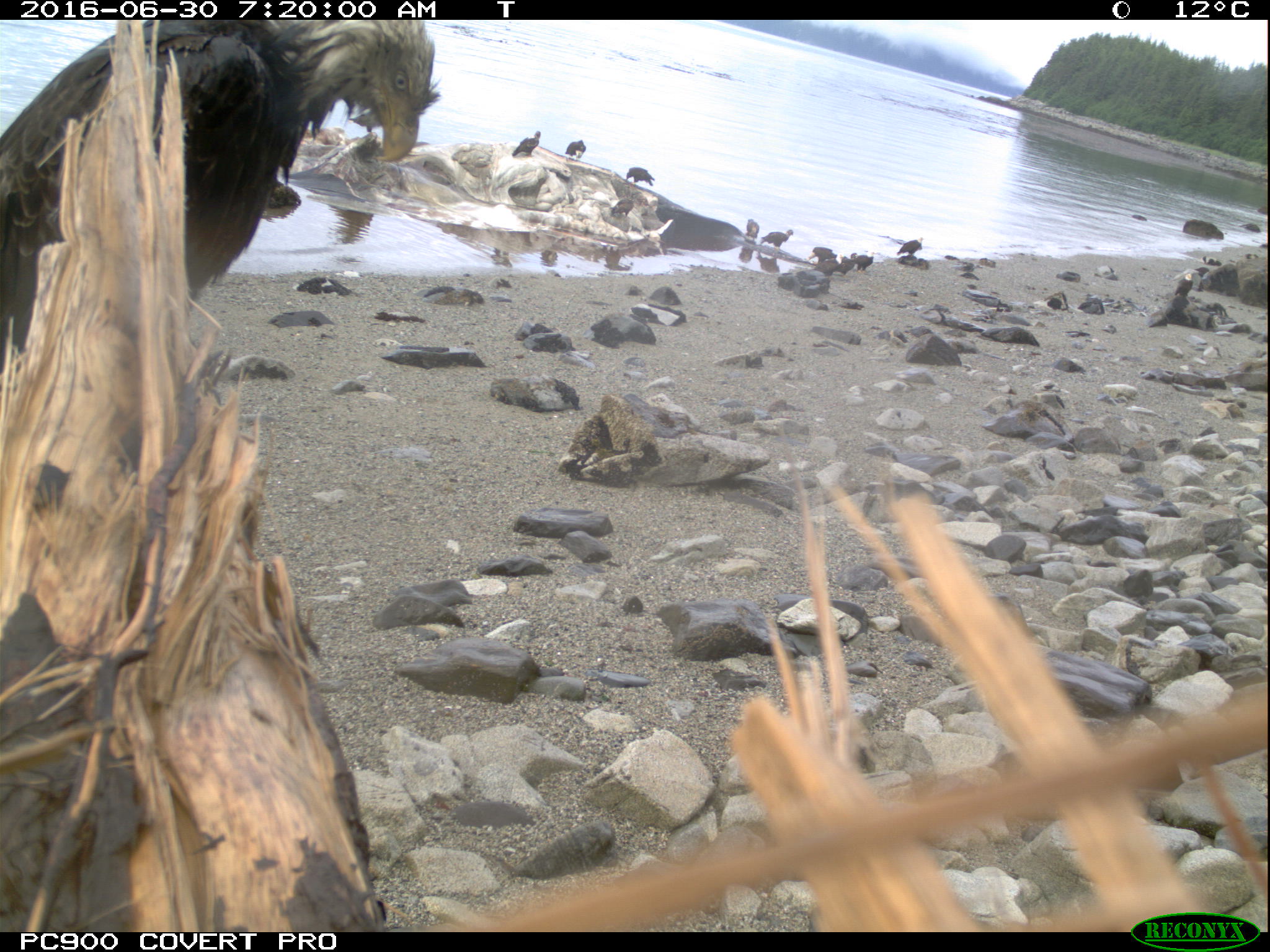
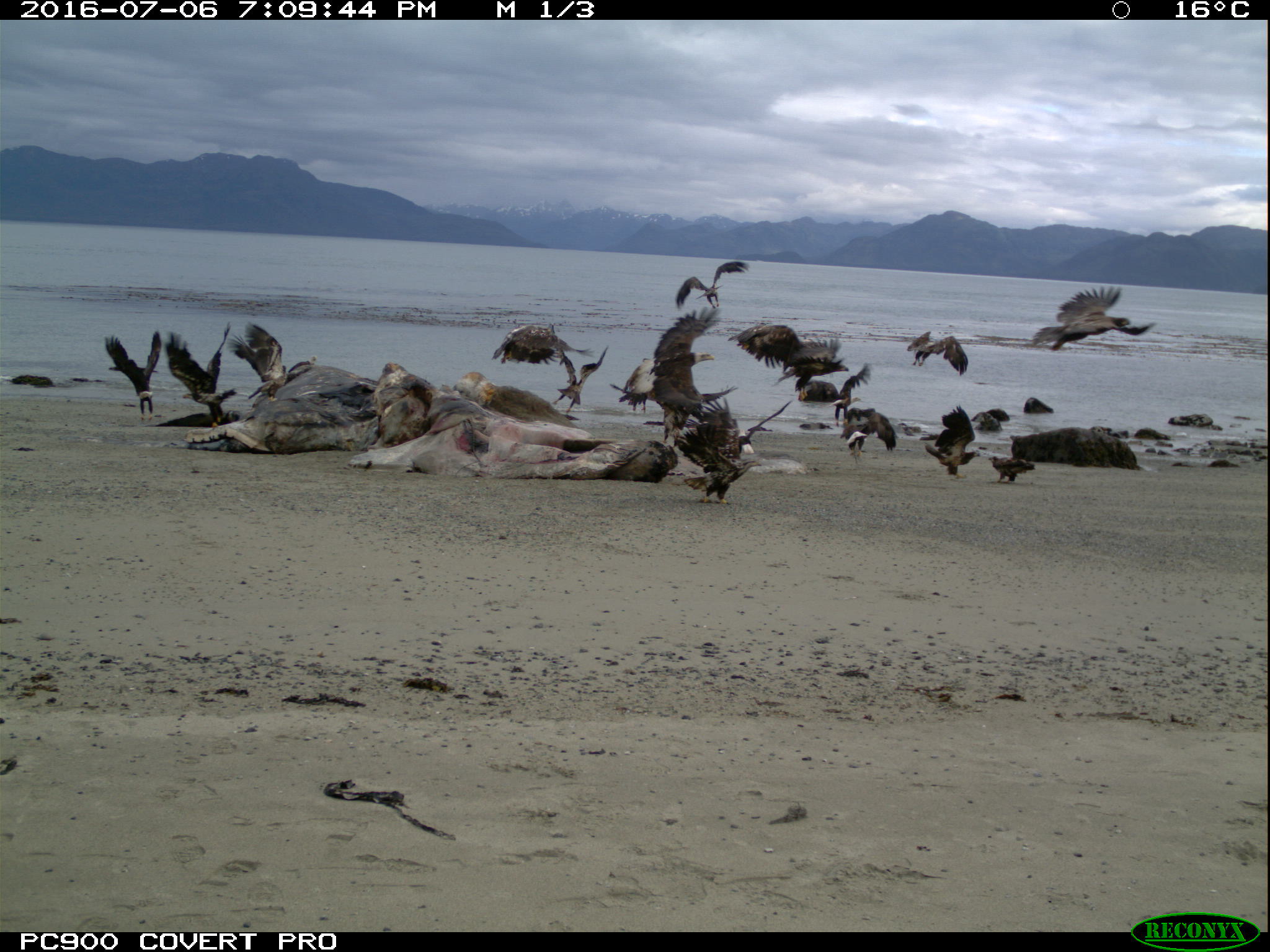
Caption: Wolves scavenge the carcass and survey the scene on July 6.
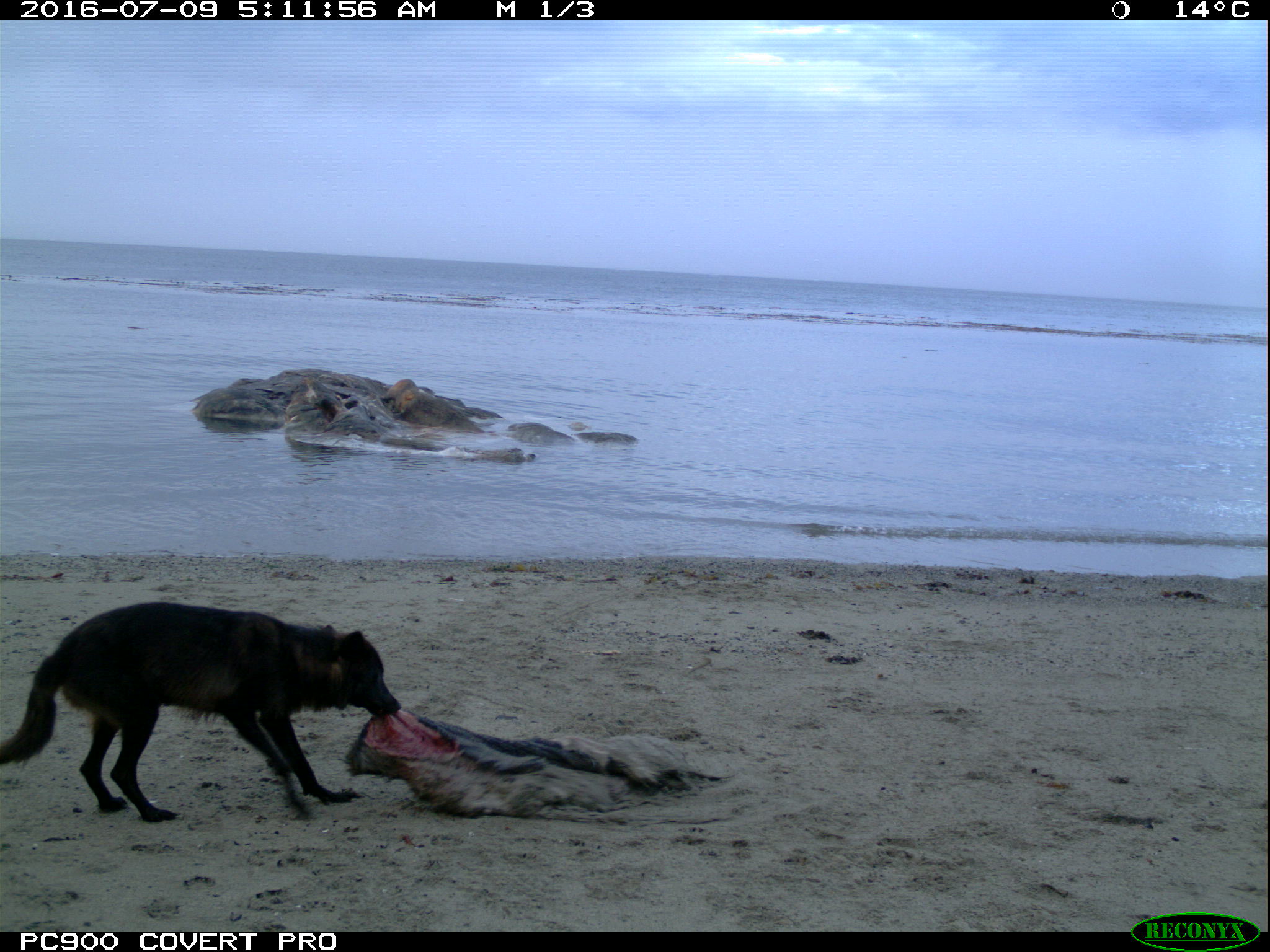
Caption: One wolf drags away a tasty "morsel" on July 9.

Caption: Wolves continue to scavenge remains of the carcass on July 30.
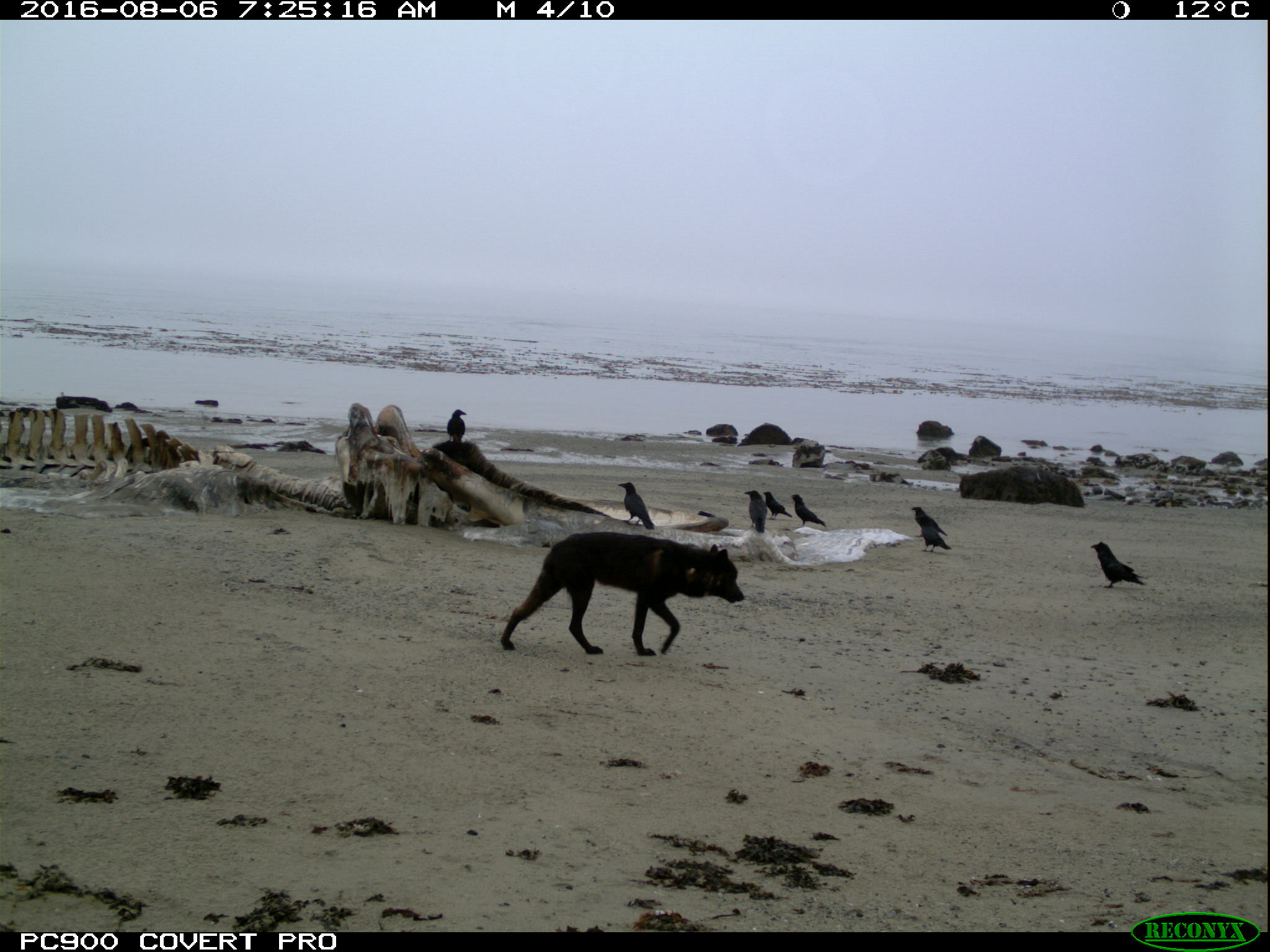
Caption: After about a month eagles visited the carcass less frequently but ravens became more common, while wolves continue to visit the carcass.Photo taken August 6th.
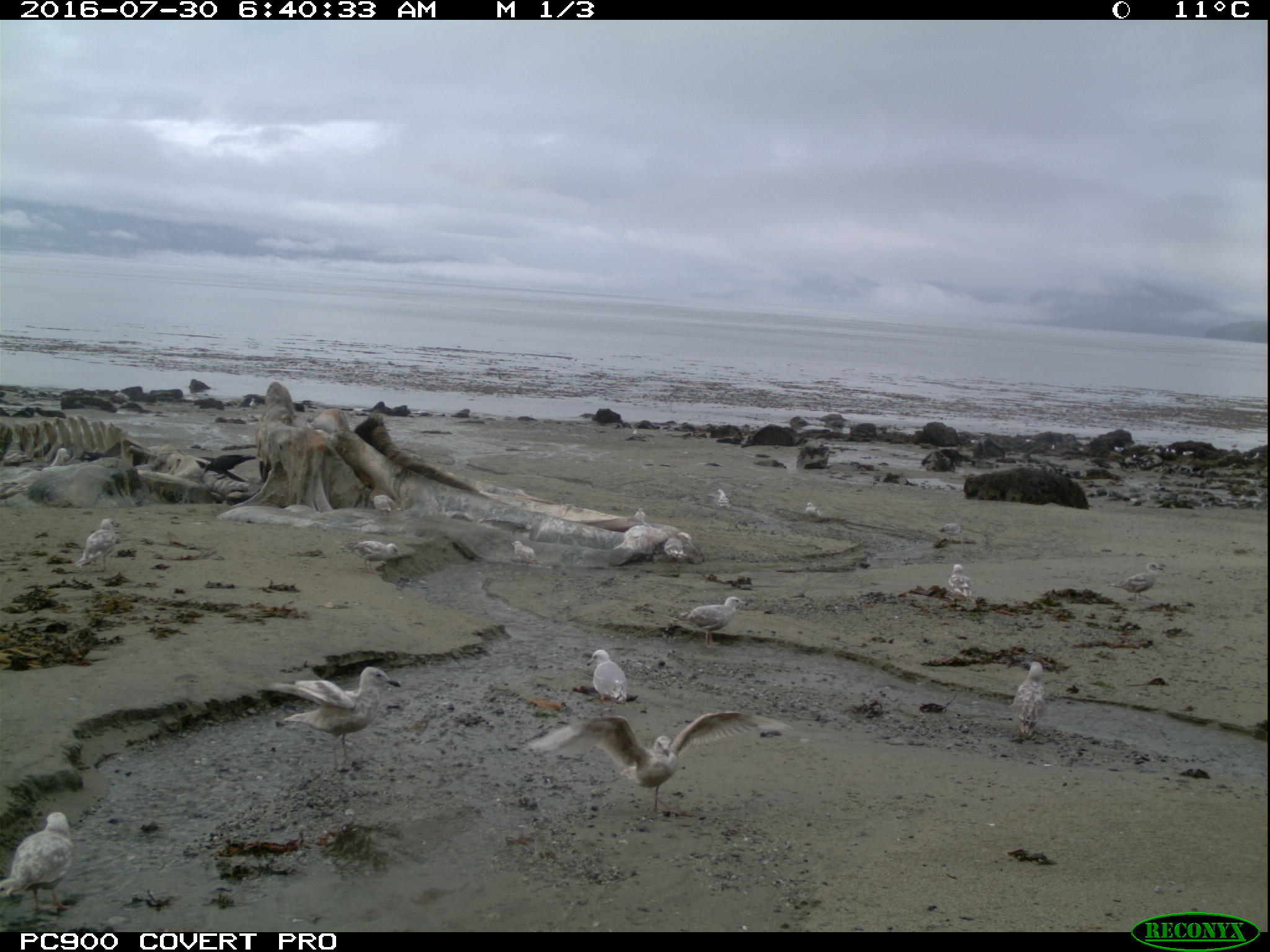
Caption: Gull numbers have also increased as eagle numbers decreased.Photo taken August 7th.
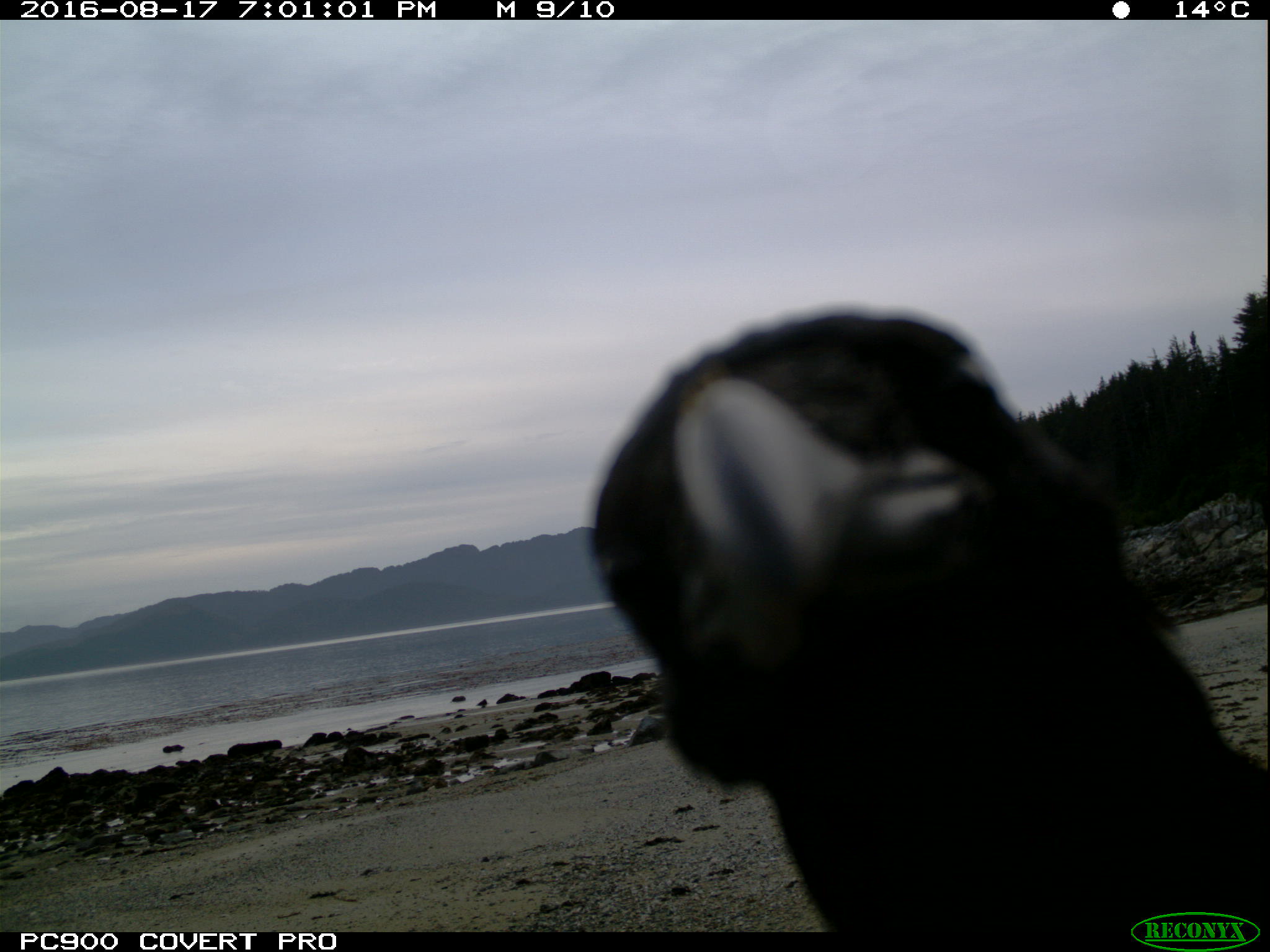
Caption: Ravens are very curious about the camera and seem to especially enjoy taking selfies. Photo taken August 17th.
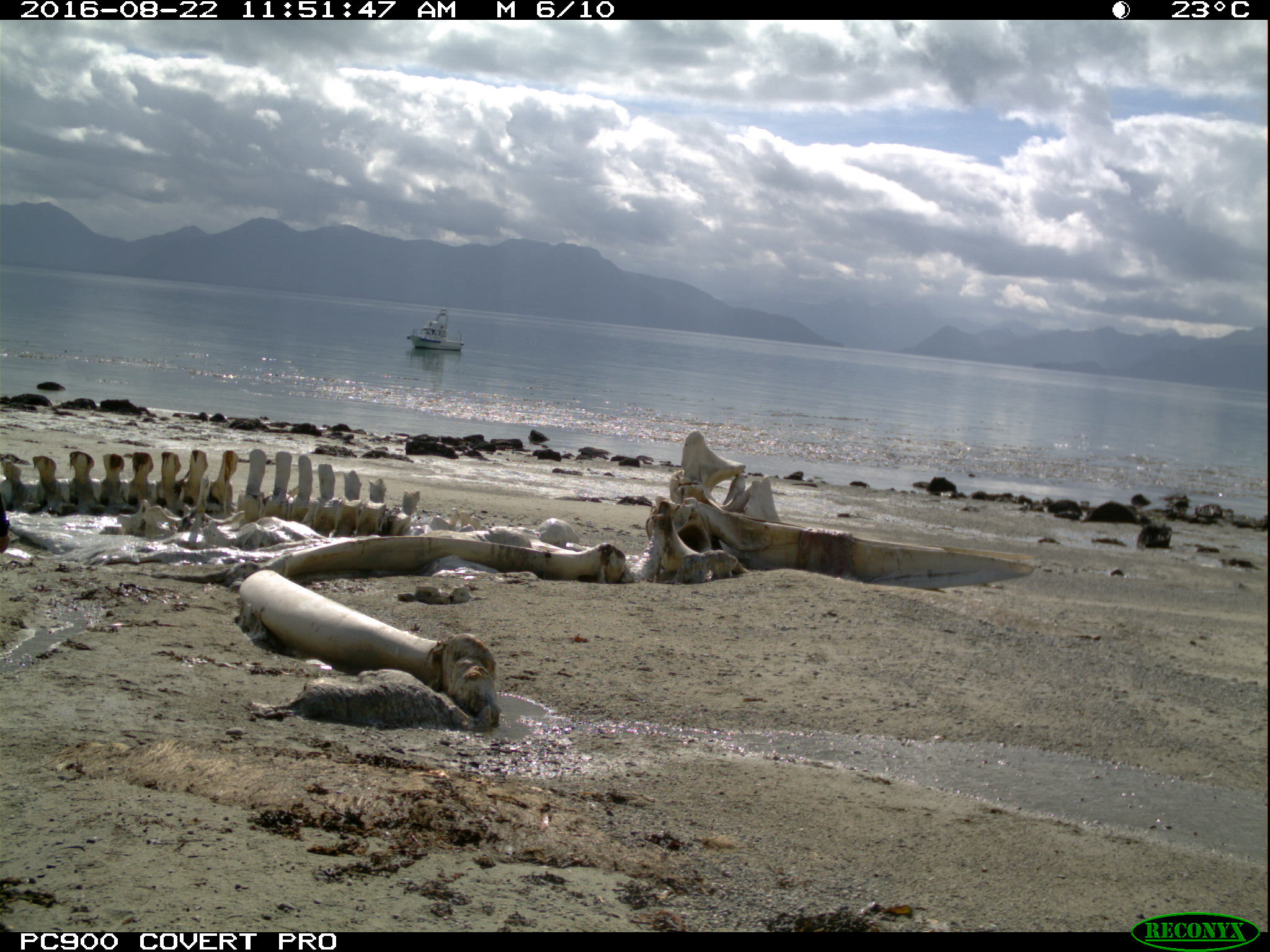
Caption: By August 22nd, after nearly two months on the beach, most of the flesh of the carcass is gone and only tough smelly blubber and bones remain.

